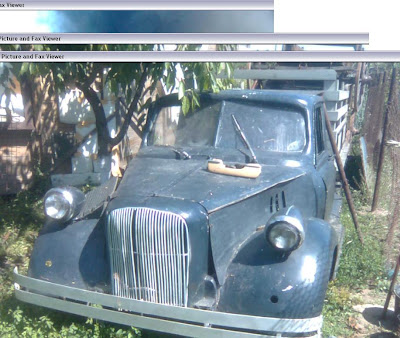Desi in zilele de astazi in fata Rexului se gasesc mai mult masini de fite, in anii 40, clientela era mai modesta. Totusi, masinile sunt modele noi, si in orice caz a avea masina in Romania interbelica era semn de nivel social inaltat. Printre modele se recunoaste un Opel Kapitan.
De remarcat ponderea masinilor americane. Surse interbelice spun ca intre 70 si 80% de masini in Romania erau de provenienta americana. In timplu razboiului, conform presei din 45-47, au plecat aproximativ 22,000 masini din tara. In schimb, au sosit cam 28,000 din strainatate, majoritatea fiind modele europene. Din motivul asta exista atate antebelice europene intr-o tara care in mod general cumpara masini americane.
Sursa: arhivele Willy Prager.

While these days most cars parked outside the Rex are super-luxury models, prewar taste was somewhat more modest. However, the cars seen in this picture are relatively new models; at any rate, owning a car in those days was in itself a sign of high status.
Note the number of American makes. Before the war, according to contemporary sources between 70 and 80% of cars in Romania were of American origin. However, during WWII about 22,000 of these cars left the country. According to the immediate postwar press, about 28,000 cars found their way back into Romania, from other European countries whose cars tended to be locally built. This explains why such a high propertion of surviving pre-war cars in Romania are European makes.






































smOGg~~_3.jpg)











